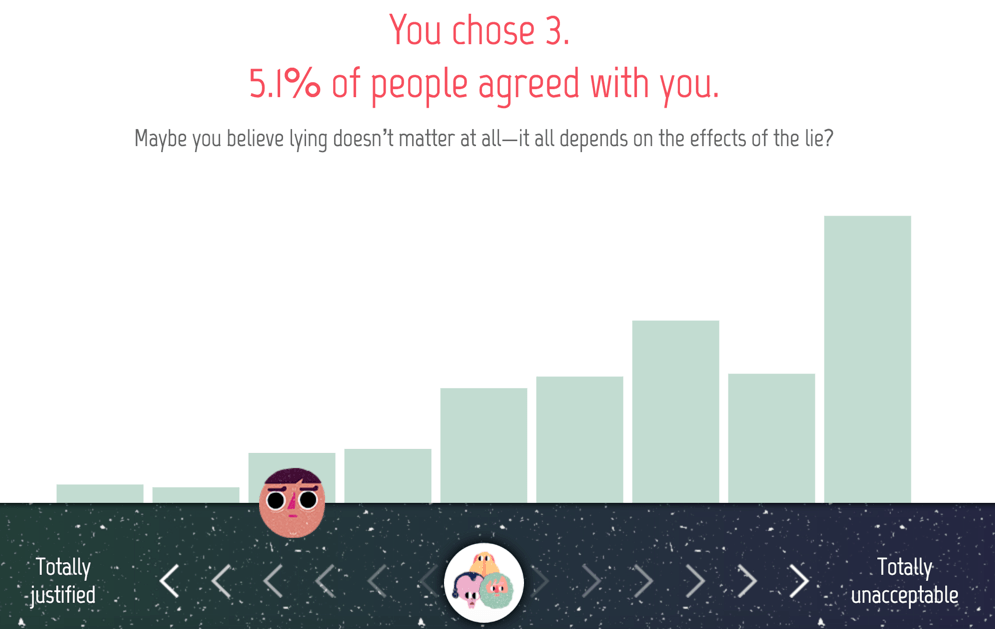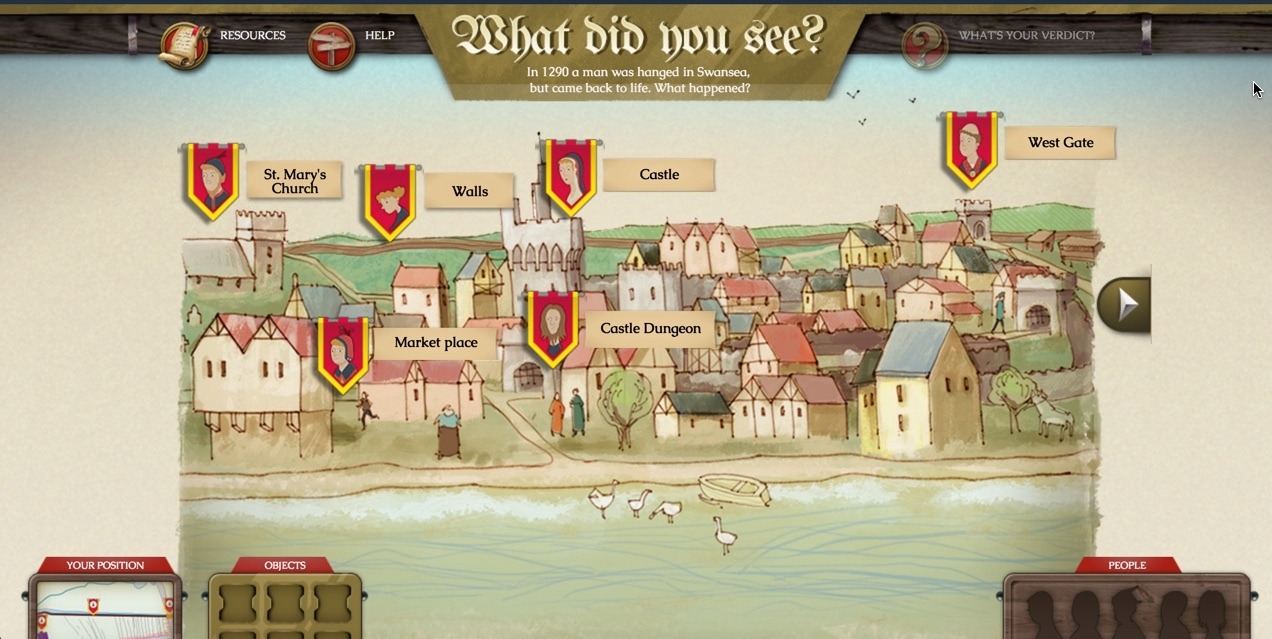How Online Training Providers Can Use Gamification In Their Courses
Let’s look at three ways to create better online training with gamification.
Related: Why gamification in eLearning is important (4 reasons)
1. Challenge learners.
Learners love to be challenged. Challenge them by using multiple variables in each question so that they have to weigh up options and make tradeoffs. Working with multiple variables makes players consider cause-and-effect relationships, weigh multiple options, and prioritize their efforts.
For example, in this Fraud Prevention example by Elucidat, learners are challenged to see if they can detect a fraudulent scenario.
Learners win badges if they correctly identify fraudulent scenarios. Multiple variables are at play here – friends are involved and learners must consider how their actions might them. While there is some technical knowhow needed to build this kind of program, modern authoring tools –such as Elucidat– have these features built in. The real skill in building this type of gamification is knowing how to create scenarios and weigh the scoring.
Related: How to build scenario-based eLearning
2. Keep score and track results with meaningful values.
Don’t just use points; instead, chose something meaningful.
For example, if you’re conducting training for your customer service team, use satisfaction level as the value to keep score. This makes it easier for learners to relate to the scenarios because the score or points system is related to their job.
Let’s look at an example by Open University called To Lie Or Not To Lie. In this game, results are delivered in an interactive graph that represents how other learners have answered the questions. This is more powerful that simply putting up a results screen with a yes or no answer.
Related: Discover how easy it is to add scoring to your eLearning with Elucidat
3. Unlock new levels when sections are complete.
Like in a game, consider locking levels or chapters in the online training so that levels only open up when the learner has successfully completed a number of set tasks.
Medieval Swansea (built using Elucidat) is a rich-media instructional game that has learners take on the role of detective to solve a historical mystery.
Learners go through a series of stories with lots of stages to unlock in solving the mystery. They have to overcome interactive challenges in their quest to gather points and bonuses. Each time a witness is interviewed, learners receive an achievement which unlock the next stage.
This gamification idea can be built using branching scenarios with an authoring tool like Elucidat.
Conclusion
Yes, gamification in online training is a hot topic, but it shouldn’t be used as a gimmick. Instead of creating online training that mimics a traditional offline game, such as a word search, think about how you can use gamification elements to enhance the learning experience beyond what is possible in offline instructor-led learning.
Experiment with modern authoring tools –such as Elucidat– to see how easy it is to incorporate these simple gamification ideas into your next online training project.
Keep reading:
- Can you turn learners into gamers? Here are 3 simple ways to gamify digital learning
- 5 killer examples of gamified eLearning











